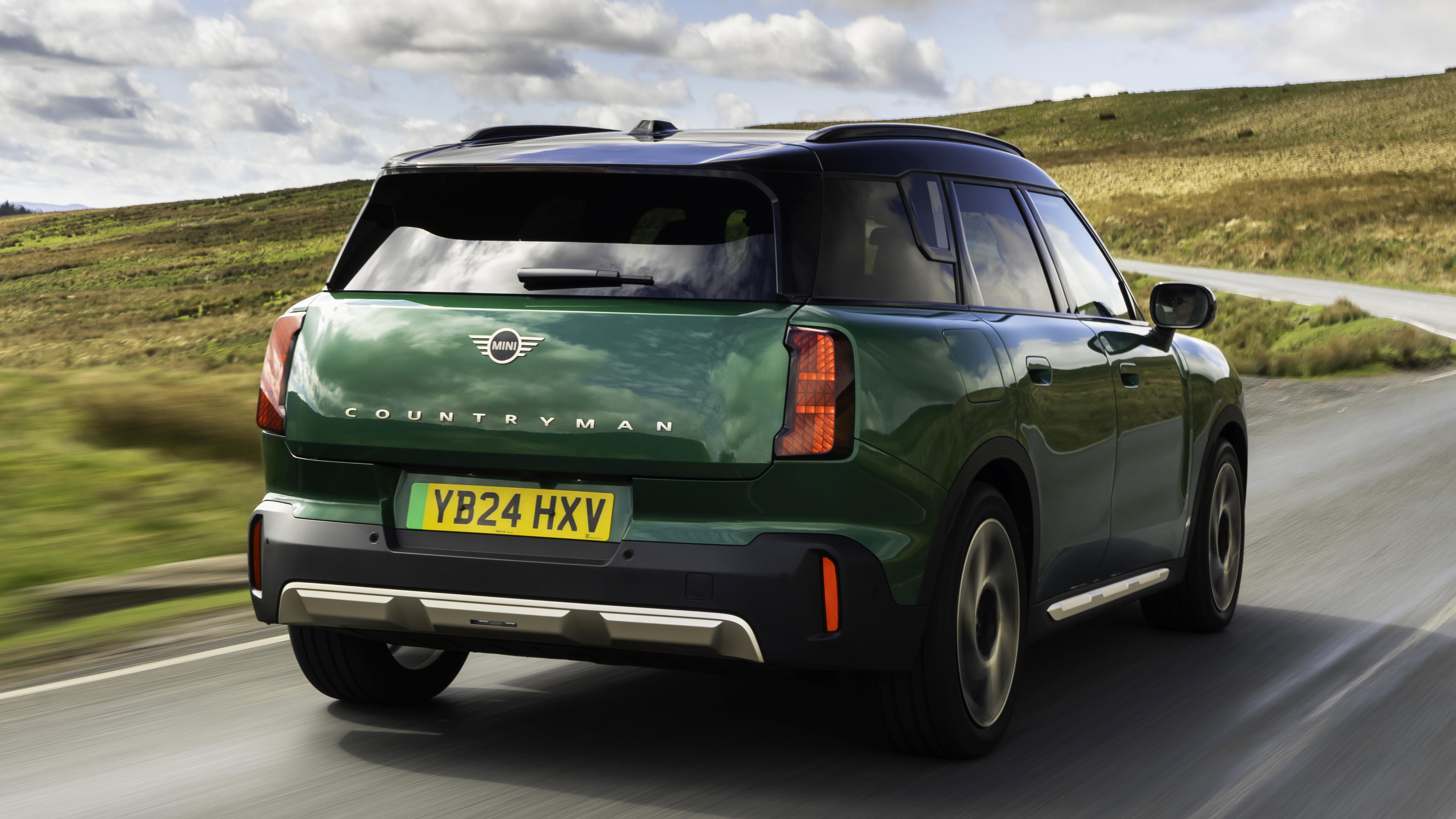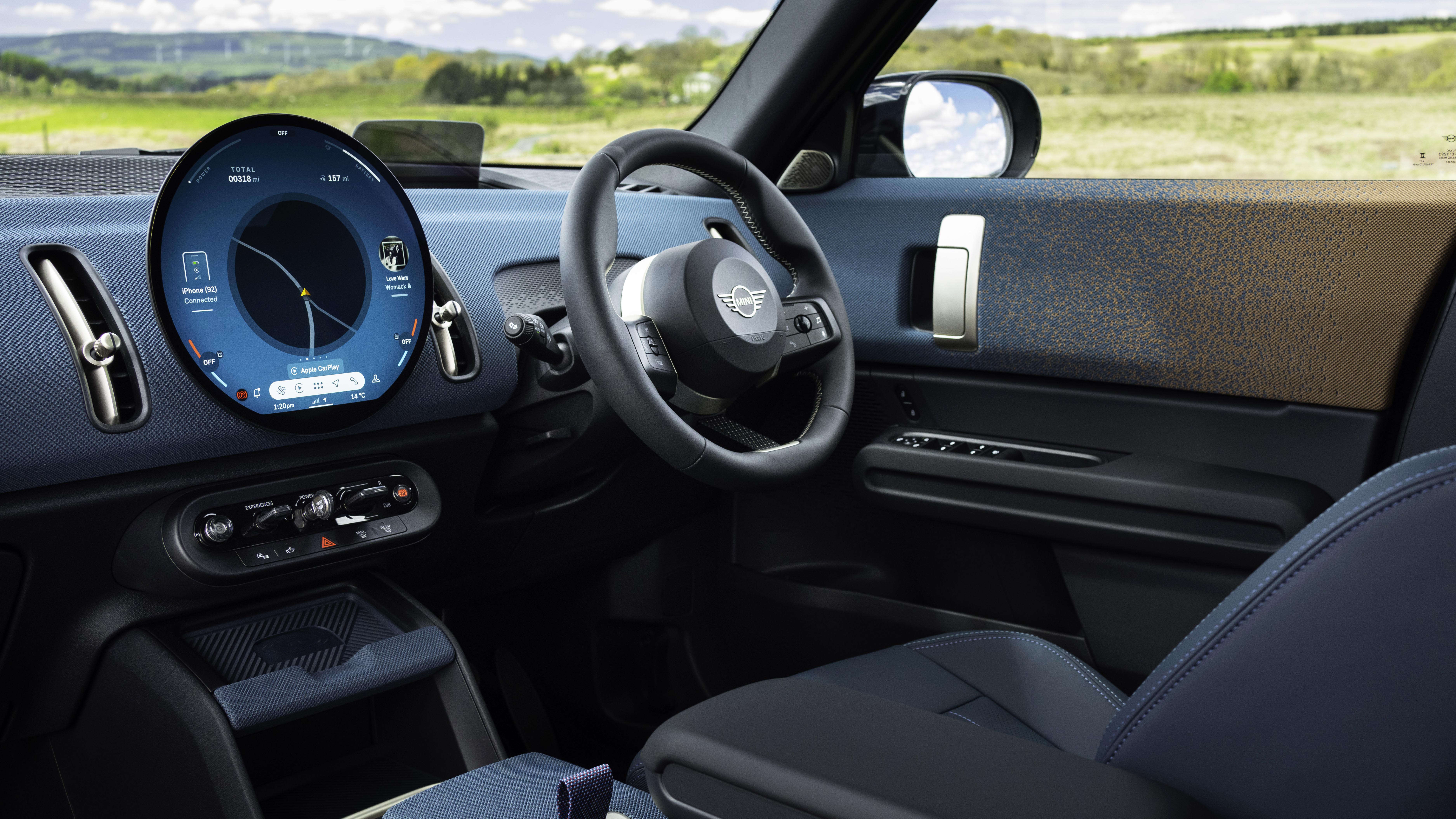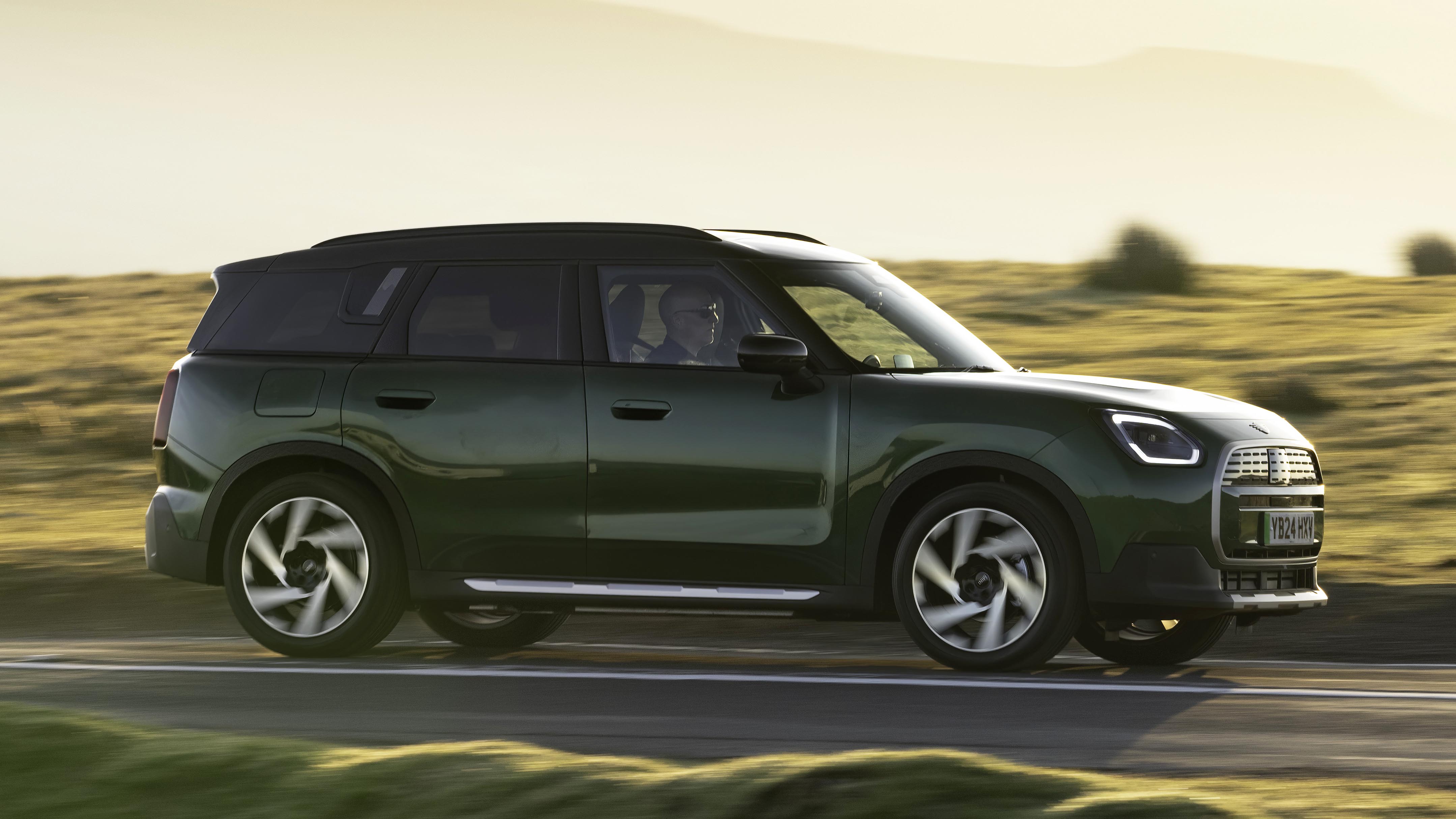
Interior
What is it like on the inside?
Mastering the complexities of connectivity and digitalisation has tripped up some of the big OEMs, but Mini’s design team has devised something imaginative, clever and tactile. Importantly, it’s also mostly easy to use despite the notably ‘fashion-forward’ look and feel.
The focal point is the central OLED display, now 240mm in diameter and absolutely fun-packed without being annoying. The upper half shows your speed and other vehicle-related info, all of which can also be displayed full-screen. A little menu bar that houses the controls for climate, audio, navigation or phone sits at the bottom, with a home button in the middle. Probably worth pointing out here that the screen doesn't work that well with Apple CarPlay or Android Auto. They both sit in a small, awkward rectangle on the circular screen and you'll need to move away from the display to change much of the Countryman's other functions.
Driver and passenger temperature controls are on the lower left and right portion of the screen, although they require a tap before you can start fiddling with the temperature. Why isn't that a slider? You can call up a ‘tool belt’ by swiping from the lower part of the screen where favourite functions can be stored. A star button on the steering wheel offers a shortcut. The steering wheel itself is also new, and features a textile strip on the lower spar. It’s a small touch but a clever one that typifies just how hard Mini’s CMF team worked on the car. Shame the rest of the wheel is so enormously fat though.
Beneath the dash is a ‘toggle bar’ that houses the parking brake button, the gear selector, a dinky little start-stop ‘key’, the ‘Experience’ mode switch, and a physical volume control. Yep, this is a car that still values physical buttons. Beneath that is a smaller row of switchgear, including the all-important button to call up the various driving assistance features so you can turn them off, hazard warning, and max front and rear demisting buttons. A wireless charging area and storage space sits underneath that alongside cupholders and a cubby. It all works and it’s all – key word – useful.
It also looks and feels fresh. The dashboard curves gently and has a knitted textile two-tone surface that’s made entirely of recycled polyester (along with the door trims, floor and floor mats). The air vents and interior door handles are vertically aligned. A panoramic roof is an option, as are massage seats. If you get fully connected, there’s a range of ever evolving apps, including the Air Console one that allows occupants to stream games and play them via their smartphones.
Any other notable new tech?
Plenty. The Countryman also introduces Mini Personal Assistant voice recognition for most major navigation, entertainment and telephone functions. Simply say, ‘Hey Mini’ or push a button on the wheel and issue the command. A canine-looking character called Spike is an option, a ‘virtual travel companion’ who appears on the central display (one for the kids, perhaps).
The Personal Assistant is undoubtedly clever and uses AI to learn your habits as the dialogue develops. It can learn regular routes, and draw on geo-based data for certain familiar tasks. For example, it’ll recognise the multi-storey or airport car park you’ve just driven into and drop the window automatically. Does it work? About half the time, during our brief interaction, anyway, which surely makes its real world value debatable. Mini says it can recognise multiple languages and difficult dialects, but it seemed perplexed by your correspondent’s gentle Ulster accent.
This third-gen Countryman uses a new Mini OS9 Android-based software stack developed by the BMW Group, with cloud-based navigation and the option of 5G.
Anything else I should know?
There are eight experience modes on the Countryman: Core, Green, Go-Kart, Personal, Vivid, Timeless, Trail and Balance. Each one has its own specially designed background on the central display, and a specific sound signature. Choose Go-Kart, for example, and you’ll be greeted with a hearty ‘woo hoo!’ Balance turns the car into a kind of mobile spa. Personal mode allows you to set your own background image via the Mini app, the dominant colours extending across the dash.
In the wrong hands much of this could have ended up being insufferable, and it treads a fine line as it is. Mostly, it’s a lot of fun and genuinely different. Mini says we sense sound faster than we see and has developed a range of 30 ‘ear-cons’ to accompany information and warning functions. BMW group is very clever at this stuff, and the Mini-specific audio environment is a welcome expansion on the brand’s overall personality.
Is it practical?
The Countryman’s increased size yields a noticeably roomier cabin, front and rear. There’s 1,450 litres of bootspace with the rear seats folded flat; 460 with the seats in place. The rear row can also be adjusted in length by up to 130mm, for more legroom or luggage space. The rear-seat backrest can be adjusted through six positions up to 12 degrees. The Comfort Access feature means you can use your smartphone as the key.
Featured

Trending this week
- Car Review
BMW 1 Series
- Top Gear's Top 9
Nine dreadful bits of 'homeware' made by carmakers






